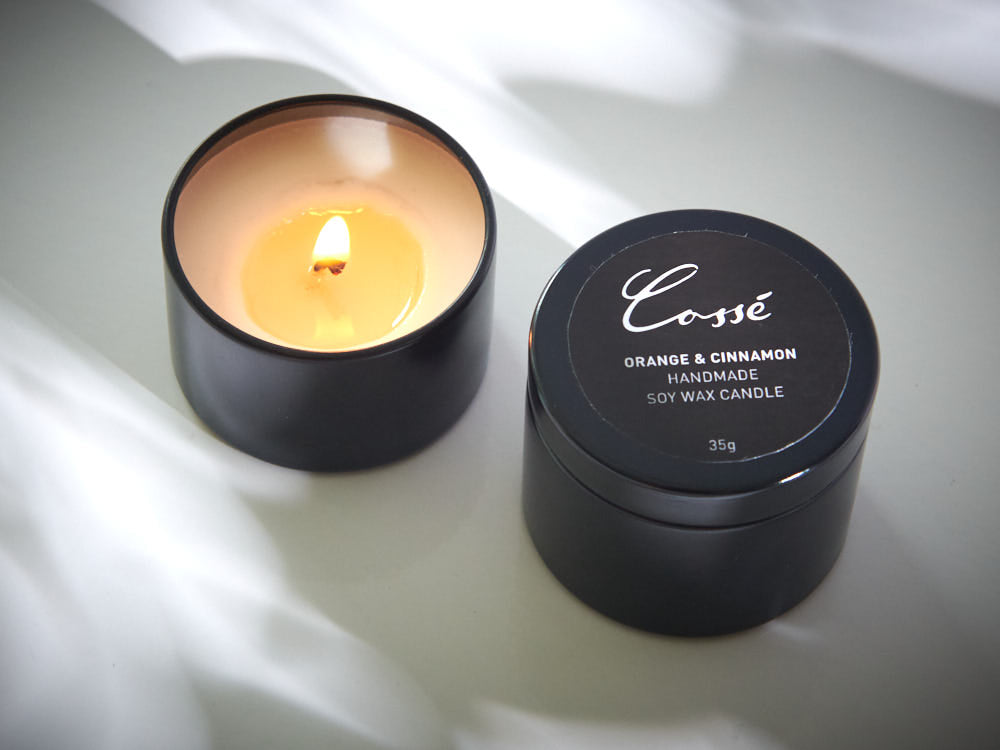Transform Your Home with Eco-Friendly Soy Candles and Home Fragrance
Transform Your Home with Eco-Friendly Soy Candles and Home Fragrance
Blog Article
From Wick to Wax: Comprehending the Chemistry Behind Soy Wax Candles and Their Ecological Influence
As we illuminate our rooms with the cozy radiance of candle lights, there lies a world of detailed chemistry behind the seemingly basic act of lighting a soy wax candle. The option between soy and paraffin wax extends past simple aesthetics, diving right into the realm of environmental effect and the really composition of the materials. Comprehending the molecular structure of soy wax and its combustion process loses light on the exhausts released right into our environments. Join us as we decipher the scientific ins and outs behind soy wax candle lights and explore their implications on our atmosphere.
Soy Wax Vs. Paraffin Wax
When comparing soy wax and paraffin wax for candle light production, it is important to understand the distinct characteristics and advantages of each product. Soy wax is an all-natural, renewable resource stemmed from soybean oil, making it eco-friendly and environment-friendly - soy candles. On the other hand, paraffin wax is a by-product of oil refining, which elevates concerns regarding its environmental influence and sustainability
Soy wax candle lights melt cleaner and send out much less soot contrasted to paraffin wax candle lights, making them a healthier choice for indoor air high quality. In addition, soy wax has a reduced melting factor, permitting for a longer-lasting candle that distributes fragrance a lot more efficiently. Paraffin wax, on the other hand, has a tendency to shed faster and much less cleanly, possibly launching dangerous chemicals right into the air.
From a sustainability viewpoint, soy wax is favored for its biodegradability and eco-friendly sourcing, aligning with the growing customer preference for environmentally conscious products. While paraffin wax has actually been a conventional choice in candle making because of its price and simplicity of use, the change towards environmentally friendly options like soy wax is acquiring momentum in the market.
Chemical Make-up of Soy Wax

Burning Refine in Soy Candles
The chemical composition of soy wax directly influences the combustion process in soy candle lights, affecting factors such as melt time, fragrance launch, and environmental influence. When a soy candle is lit, the heat from the flame melts the wax near the wick.
The combustion performance of soy candle lights is influenced by the pureness of the soy wax and the top quality of the wick. Additionally, soy wax candles have a reduced ecological impact compared to paraffin candles due to their renewable and naturally degradable nature.

Ecological Benefits of Soy Wax

Considered a lasting option to typical paraffin wax, soy wax offers notable environmental advantages that make it a preferred option amongst eco-conscious consumers. One considerable benefit of soy wax is its sustainable sourcing. Soy wax is originated from soybean oil, which is mostly cultivated in the USA. The farming of soybeans assists support regional farmers and decreases the dependency on non-renewable fossil gas utilized in paraffin wax manufacturing. Furthermore, soy wax is naturally degradable, meaning it breaks down normally without launching damaging toxic substances right into the atmosphere. This characteristic makes soy wax candles an extra eco-friendly choice compared to paraffin wax candle lights, which are made from petroleum, a non-renewable resource. Soy wax burns cleaner and produces less soot than paraffin wax, adding to better indoor air top quality and minimizing the demand for cleansing and maintenance. In general, the environmental advantages of soy wax straighten with the growing demand for green and sustainable items in the market.
Recycling and Disposal Factors To Consider
Reusing and proper disposal of soy wax candle lights play an essential duty in preserving environmental sustainability and minimizing waste in households and communities. When it comes to recycling soy wax candles, the very first step is to make certain that the candle has shed completely. This can be attained by permitting the candle light to melt until the wick is no more usable, and afterwards letting the staying wax cool and anonymous solidify. When the wax has strengthened, it can be carefully removed from the container.

In terms of disposal, if recycling is not an option, soy wax candle lights are biodegradable and can be securely taken care of in a lot of household waste systems. Nonetheless, it is constantly suggested to get in touch with neighborhood recycling centers or waste administration services for details guidelines on candle disposal to ensure correct handling and ecological protection.
Final Thought
In conclusion, the chemistry behind soy wax candle lights reveals their environmental advantages over paraffin wax candle lights. Soy wax, derived from soybean oil, burns cleaner and generates less residue when compared to paraffin wax. The combustion procedure in soy candle lights is a lot more reliable, causing soy wax candles a longer and a lot more even shed. Additionally, soy wax is eco-friendly and eco-friendly, making it a more lasting selection for candle manufacturing. Recycling and proper disposal of soy wax candle lights further add to their ecological influence.
When comparing why not find out more soy wax and paraffin wax for candle production, it is vital to understand the distinctive characteristics and advantages of each material (soy candles).Soy wax candle lights melt cleaner and emit much less residue compared to paraffin wax candle lights, making them a healthier selection for interior air high quality.Considered a sustainable choice to traditional paraffin wax, soy wax provides noteworthy environmental advantages that make it a preferred option amongst eco-conscious customers. Soy wax burns cleaner and produces much less soot than paraffin wax, contributing to much better indoor air quality and minimizing the requirement for cleaning and maintenance.In final thought, the chemistry behind soy wax candles discloses their environmental advantages over paraffin wax candle lights
Report this page